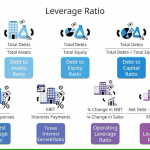In the world of business, mergers and acquisitions are often touted as a surefire way to achieve rapid growth, expand market share, and unlock synergies. The promise of increased efficiency, cost savings, and enhanced competitiveness lures many companies into acquisition frenzies, where they aggressively pursue one acquisition after another. However, this frenetic pursuit of growth through M&A can come at a heavy price, often resulting in the destruction of shareholder value.
Investors need to be aware that the allure of mergers and acquisitions can sometimes blind decision-makers, leading them to overlook the potential risks and pitfalls associated with these corporate transactions. From overpaying for acquisitions to cultural clashes and integration challenges, the dark side of mergers and acquisitions can have a devastating impact on a company’s financial performance and long-term viability.
In this article, we will delve into the often-overlooked consequences of acquisition frenzies, exploring how these deals can erode shareholder value and what investors should be on the lookout for. By examining real-world examples and providing invaluable insights, we aim to equip investors with the knowledge and resources they need to navigate the treacherous terrain of mergers and acquisitions, ultimately helping them make informed decisions and protect their investments.
The Lure of M&A: Why Companies Pursue Deals
Companies engage in mergers and acquisitions for a variety of reasons, each with its own set of potential benefits and risks. The most commonly cited motivations include:
Growth
Many organizations view M&A as a shortcut to rapid expansion, allowing them to leapfrog the slow, organic growth process and instantly boost their size, market share, and competitive positioning. The allure of transformational deals that can reshape an industry overnight is undeniably enticing.
Synergies
The promise of cost savings, operational efficiencies, and revenue enhancements through synergies is a powerful draw for companies considering an acquisition. By consolidating duplicate functions, streamlining workflows, and cross-selling products, the acquirer hopes to unlock significant value.
Diversification
For some firms, M&A provides a means of expanding into new markets, product lines, or customer segments – reducing reliance on a single business and spreading risk. Conglomerate mergers, in particular, are often justified on the grounds of diversification.
Talent and IP Acquisition
Acquiring a company can also be a way to quickly onboard skilled personnel, technological capabilities, and valuable intellectual property that would be difficult or time-consuming to build organically.
Competitive Positioning
In industries prone to consolidation, mergers can be a defensive play to fend off rivals, create economies of scale, and solidify market leadership. The fear of being left behind often drives companies to pursue deals.
The Risks of M&A: Why Deals So Often Fail
While the rationale for pursuing mergers and acquisitions may seem compelling, the reality is that the majority of these transactions fail to create value. Several key risks contribute to this dismal success rate:
Overvaluation
One of the most common pitfalls is overpaying for the target company. Executives, driven by ambition or overconfidence, can easily fall victim to irrational exuberance, leading them to offer astronomical premiums that simply cannot be justified by the target’s true worth or the acquirer’s ability to extract value. Fraudulent accounting practices by the target can also contribute to gross overvaluation.
Integration Challenges
Integrating two disparate organizations, with their own unique cultures, processes, and systems, is an enormously complex undertaking. Clashes between management styles, employee resistance to change, and difficulties aligning operations can all undermine the realization of anticipated synergies.
Distraction and Loss of Focus
The sheer time and resources required to execute a merger often divert management’s attention away from the core business, hampering operational performance and delaying the achievement of strategic objectives. This “merger fatigue” can persist long after the deal has closed.
Regulatory Hurdles
Antitrust authorities and other government bodies may intervene to block or impose restrictive conditions on mergers that are deemed anti-competitive or contrary to the public interest. Such regulatory interference can significantly alter the economics of a deal, rendering it unviable.
Cultural Clashes
Differences in organizational cultures, management styles, and employee expectations can create deep-rooted tensions that are extremely difficult to resolve. When the “us vs. them” mentality takes hold, collaboration and knowledge sharing often grind to a halt, eroding the potential for synergies.
Talent Exodus
The uncertainty and upheaval created by a merger can trigger an exodus of key personnel, taking with them critical skills, institutional knowledge, and customer relationships that are essential for the success of the combined entity.
Unforeseen Costs
M&A transactions frequently involve hidden or underestimated expenses, such as legal fees, regulatory compliance costs, and the price tag of integrating disparate systems and processes. These unanticipated costs can quickly erode the financial benefits of the deal.
The Consequences of Failed M&A: Shareholder Value Destruction
The ramifications of unsuccessful mergers and acquisitions can be severe, with the primary victims being the shareholders of the acquiring company. Some of the most significant consequences include:
Financial Losses
When a high-profile acquisition fails to deliver the expected returns, it can cripple the acquirer’s financial position by depleting its capital reserves and tying up resources that could have been more productively deployed elsewhere.
Reputational Damage
A highly publicized M&A debacle can severely tarnish a company’s brand reputation, shaking investor confidence and undermining its credibility among key stakeholders such as customers, suppliers, and the broader investment community.
Management Turnover
The fallout from a failed merger often leads to the dismissal or resignation of the executives responsible, creating further instability and uncertainty within the organization.
Shareholder Lawsuits
Disgruntled shareholders may seek legal recourse, filing class-action suits alleging breach of fiduciary duty, inadequate disclosure, or other grievances related to the failed transaction.
Regulatory Scrutiny
Botched mergers can also invite increased regulatory oversight, with antitrust authorities and other government agencies closely scrutinizing future acquisition attempts by the company.
The impact of acquisition frenzies on shareholder value
One of the most significant risks associated with acquisition frenzies is the potential for value destruction. Companies that engage in a rapid succession of acquisitions often find themselves caught up in a cycle of overpaying, underestimating integration costs, and failing to realize the promised synergies. This can lead to a significant erosion of shareholder value, as the company’s stock price languishes or even declines in the aftermath of these ill-advised transactions.

A prime example of this phenomenon is the ill-fated merger between AOL and Time Warner in 2000. At the time, the deal was hailed as a transformative move that would create a media and technology powerhouse. However, the integration of the two companies proved to be a nightmare, with clashing corporate cultures, technology challenges, and an inability to capitalize on the promised synergies. The result was a massive write-down of the acquired assets, leading to a staggering loss of shareholder value and the eventual breakup of the combined entity.
Similarly, the acquisition spree of Verizon Communications in the early 2000s, which included the purchases of GTE and MCI, failed to deliver the expected returns. While the acquisitions were intended to bolster Verizon’s market position and enhance its capabilities, the integration process was plagued by operational challenges and the inability to fully capitalize on the acquired assets. Shareholders were left to bear the brunt of these missteps, as Verizon’s stock price languished for years in the aftermath of these acquisitions.
Common mistakes made during acquisition frenzies
One of the primary drivers behind the destruction of shareholder value in acquisition frenzies is the tendency for companies to overpay for their targets. In the heat of the moment, decision-makers can become blinded by the allure of growth and market share, leading them to offer inflated prices that fail to reflect the true value of the acquired business. This overvaluation can create a significant burden on the acquiring company, as it must then struggle to generate sufficient returns to justify the high acquisition price.
Another common mistake made during acquisition frenzies is the underestimation of integration costs and challenges. Merging two distinct organizations, with their own cultures, processes, and systems, can be a complex and resource-intensive undertaking. Companies often underestimate the time, effort, and financial resources required to successfully integrate the acquired business, leading to significant delays, operational disruptions, and unexpected expenses that erode shareholder value.
Furthermore, acquisition frenzies can also lead to a lack of strategic focus, as companies become consumed by the pursuit of growth through M&A rather than concentrating on their core competencies and long-term competitive advantages. This can result in a dilution of resources, a loss of market focus, and a failure to capitalize on the unique strengths and capabilities that once made the company successful.
Signs to watch out for when evaluating potential mergers
Investors should be vigilant in identifying the warning signs of a potentially problematic acquisition. One red flag to watch out for is a company’s track record of past acquisitions. If a company has a history of failed or underperforming mergers and acquisitions, it may be an indication that the organization lacks the necessary integration capabilities or strategic vision to effectively execute these complex transactions.
Another sign to be wary of is a company’s willingness to pay a significant premium for the target. While a certain degree of premium is often necessary to secure a deal, excessive valuations can be a sign that the acquiring company is overpaying and may struggle to generate sufficient returns to justify the investment.
Investors should also closely examine the strategic rationale behind a proposed merger or acquisition. If the justification for the deal appears to be primarily focused on growth or market share rather than long-term value creation, it may be a sign that the transaction is more about ego or empire-building than enhancing shareholder value.
The role of due diligence in mitigating risks
Thorough due diligence is a critical component in mitigating the risks associated with acquisition frenzies. Companies that engage in a comprehensive, well-executed due diligence process are better equipped to uncover potential issues, identify integration challenges, and make informed decisions about the viability and value of a potential acquisition.
During the due diligence phase, companies should carefully examine the target’s financial records, operational capabilities, market positioning, and cultural fit. This deep dive into the acquired business can help the acquiring company better understand the true value of the target and identify any potential red flags or integration obstacles that may arise.
In addition to financial and operational due diligence, companies should also devote significant attention to the cultural and organizational aspects of the merger. Differences in corporate cultures, management styles, and employee expectations can be a significant source of friction and value destruction if not properly addressed during the integration process.
Strategies for protecting shareholder value during acquisition frenzies
To protect shareholder value during acquisition frenzies, companies should adopt a more disciplined and strategic approach to mergers and acquisitions. This includes establishing clear criteria for evaluating potential targets, conducting rigorous due diligence, and developing comprehensive integration plans that address both operational and cultural challenges.
Additionally, companies should be mindful of their own capabilities and limitations when it comes to executing complex mergers and acquisitions. If a company lacks the necessary expertise or resources to effectively integrate an acquired business, it may be prudent to refrain from pursuing the transaction or seek out strategic partners who can provide the necessary support.
Investors, on the other hand, should be wary of companies that appear to be engaged in a relentless acquisition spree, as this may be a sign of value-destroying behavior. Instead, investors should look for companies that demonstrate a more measured and strategic approach to mergers and acquisitions, with a clear focus on long-term value creation rather than short-term growth.
Lessons learned from past acquisition frenzies
The cautionary tales of failed mergers and acquisitions provide valuable lessons for both companies and investors. One of the key takeaways is the importance of maintaining a long-term perspective and avoiding the temptation to chase short-term growth at the expense of shareholder value.
The AOL-Time Warner merger, for example, serves as a stark reminder that the success of a merger is not solely dependent on the size or scale of the combined entity. Rather, it is the ability to effectively integrate the two organizations, capitalize on synergies, and create a cohesive, high-performing culture that ultimately determines the success or failure of a merger.
Similarly, the Verizon acquisitions highlight the need for companies to have a deep understanding of their own capabilities and limitations when it comes to integration and value creation. Overreaching and biting off more than they could chew led to significant value destruction for Verizon’s shareholders.
The importance of a long-term perspective in mergers and acquisitions
Ultimately, the key to navigating the dark side of mergers and acquisitions is to adopt a long-term, value-driven perspective. Companies should resist the temptation to engage in acquisition frenzies driven by short-term growth or market share objectives, and instead focus on identifying strategic targets that align with their core competencies and can truly enhance their competitive position over the long term.
Investors, too, should be wary of companies that appear to be more focused on the thrill of the deal than the creation of sustainable shareholder value. By carefully scrutinizing a company’s acquisition history, strategic rationale, and integration capabilities, investors can better identify the potential risks and make informed decisions that protect their investments.
In the end, the dark side of mergers and acquisitions serves as a cautionary tale, reminding both companies and investors of the importance of disciplined, strategic decision-making and a relentless focus on long-term value creation. By heeding these lessons, they can navigate the treacherous terrain of mergers and acquisitions and unlock the true potential of these corporate transactions.
Conclusion
The allure of mergers and acquisitions is undeniable, but the harsh reality is that the majority of these high-stakes transactions fail to create value for shareholders. By understanding the dark side of M&A – the risks of overvaluation, integration challenges, cultural clashes, and more – investors can make more informed decisions and avoid getting caught up in the frenzy of acquisition-driven growth strategies.
As an alternative, a more systematic, programmatic approach to M&A, characterized by a series of smaller, targeted deals, has shown greater promise in delivering sustainable value. By developing specialized integration capabilities, maintaining flexibility, and minimizing integration risks, companies that embrace this model are better positioned to navigate the complexities of mergers and acquisitions.
Ultimately, the success or failure of an M&A transaction hinges on the acquirer’s ability to carefully assess the target, integrate the two organizations seamlessly, and extract the anticipated synergies. Investors who remain vigilant and discerning in the face of acquisition-driven growth strategies are more likely to avoid the pitfalls that have ensnared so many companies and their shareholders.






